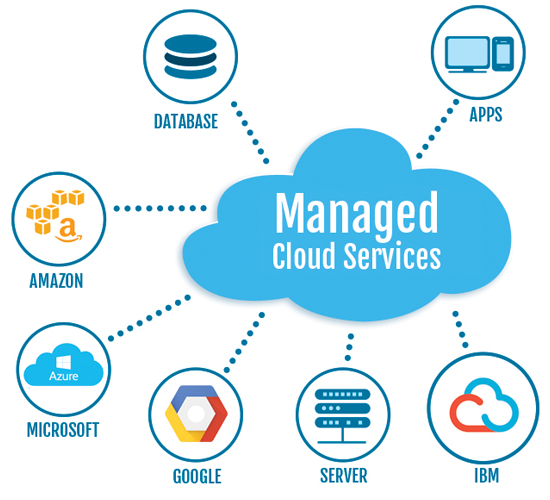Discover LinkDaddy Cloud Services for Universal Cloud Service Success: Press Release Insights
Discover LinkDaddy Cloud Services for Universal Cloud Service Success: Press Release Insights
Blog Article
Simplify Your Facilities With Cloud Solutions
As organizations navigate the ever-evolving landscape of technology and information management, the function of cloud services in simplifying infrastructure has actually ended up being progressively noticeable. How can organizations efficiently browse this transition and truly open the potential of cloud services for streamlining their facilities?
Advantages of Cloud Solutions
Cloud solutions provide a structured approach to handling IT framework, offering businesses with cost-efficiency, scalability, and adaptability. One of the vital benefits of cloud services is the scalability they offer.
In addition, cloud services get rid of the demand for companies to purchase costly equipment and software. This cost-efficiency is a considerable benefit, particularly for tiny to medium-sized business aiming to decrease in advance expenses. By using cloud solutions, businesses can access top notch IT resources without the substantial cost tag linked with typical infrastructure configurations.
Additionally, cloud solutions supply businesses with the versatility to access their information and applications from anywhere with a net link. This degree of accessibility boosts collaboration among teams, makes it possible for remote job, and enhances overall productivity. The adaptability provided by cloud solutions equips services to adjust swiftly to altering market conditions and client needs.
Price Cost Savings and Scalability
In addition to the functional benefits highlighted previously, the combination of cloud solutions right into a company's framework brings forth significant cost financial savings and improved scalability. Cloud solutions supply a pay-as-you-go design, enabling organizations to scale sources up or down based upon existing demands, thereby avoiding the prices associated with keeping excess capacity. This flexibility enables business to adjust rapidly to changing needs without sustaining unneeded costs.
In addition, cloud solutions get rid of the demand for in advance financial investments in equipment and software, decreasing capital investment. Operating budget are additionally lessened as companies no more require to manage and preserve physical web servers, causing lower energy consumption and IT staffing expenses. In addition, cloud services give automatic updates and upkeep, making certain that the framework remains safe and secure and current without calling for manual interventions.
Improved Protection Measures
Implementing stringent safety and security procedures is extremely important when integrating cloud services into a company's infrastructure to safeguard delicate data and make certain compliance with sector guidelines. Cloud company offer improved safety functions such as data file encryption, firewall program defense, and multi-factor verification to minimize cybersecurity dangers. Security helps protect information both at rest and en route, ensuring that just accredited users can access sensitive information. Firewall programs act as a barrier between internal networks and exterior dangers, monitoring and regulating incoming and outward bound network web traffic. Multi-factor verification includes an additional layer of safety and security by requiring customers to provide multiple forms of verification before accessing the cloud solutions.
Furthermore, regular protection audits and compliance analyses aid ensure and determine vulnerabilities adherence to market standards. Companies can also benefit from features like computerized safety updates and real-time hazard surveillance provided by cloud company. By focusing on security procedures and staying proactive in attending to possible risks, services can with confidence leverage cloud services while securing their valuable data from unapproved accessibility or violations.
Transitioning to Cloud Infrastructure
To efficiently site incorporate cloud services right into a firm's framework, an organized technique that resolves the change in the direction of cloud-based options is crucial. Transitioning to cloud framework entails mindful planning and execution to guarantee a smooth migration process. The initial action is to analyze the existing infrastructure and determine which systems and applications appropriate for migration to the cloud. This examination must consider aspects such as information level of sensitivity, compliance demands, and performance needs.
As soon as the assessment is full, a migration method need to be created. This approach needs to describe the timeline, sources, and duties for relocating each element to the cloud. It is necessary to communicate this strategy plainly to all stakeholders to ensure positioning and minimize interruptions during the change.
Throughout the movement screening, process and tracking are important to identify and address any concerns without delay. Regular checkpoints ought to be established to track progression and make needed adjustments. Additionally, training for workers on utilizing cloud solutions must be supplied to guarantee an effective transition and make the most of the advantages of the new infrastructure.
Ideal Practices for Cloud Fostering
Effective adoption of cloud services pivots on the tactical alignment of service goals with technological abilities and organizational preparedness. To guarantee a smooth shift to the cloud, companies should begin by conducting a comprehensive evaluation of their current facilities and recognizing which work are best fit for cloud movement. It is critical to include key stakeholders from different departments in the decision-making process to acquire buy-in and deal with any kind of concerns early on.
Another ideal practice for cloud adoption is to prioritize safety and conformity. Organizations has to very carefully review the safety procedures supplied by cloud company and make sure that their data is secured according to industry requirements and regulative needs. Executing robust data file encryption, gain access to controls, and routine safety audits can assist mitigate dangers connected with cloud fostering.

Verdict

As organizations browse the ever-evolving landscape of modern technology and information administration, the role of cloud solutions in simplifying infrastructure has actually come to be progressively famous - Cloud Services. Just how can businesses efficiently navigate this change and really open the capacity of cloud services for streamlining their framework?
Cloud services provide a structured method to managing IT facilities, giving businesses with adaptability, scalability, and cost-efficiency. By making use of cloud services, organizations can access high-quality IT sources without the large rate tag linked with typical framework configurations.
To make certain a smooth shift to the cloud, organizations ought to start by carrying out a comprehensive evaluation of their present facilities and recognizing which workloads are best additional info matched for cloud migration.
Report this page